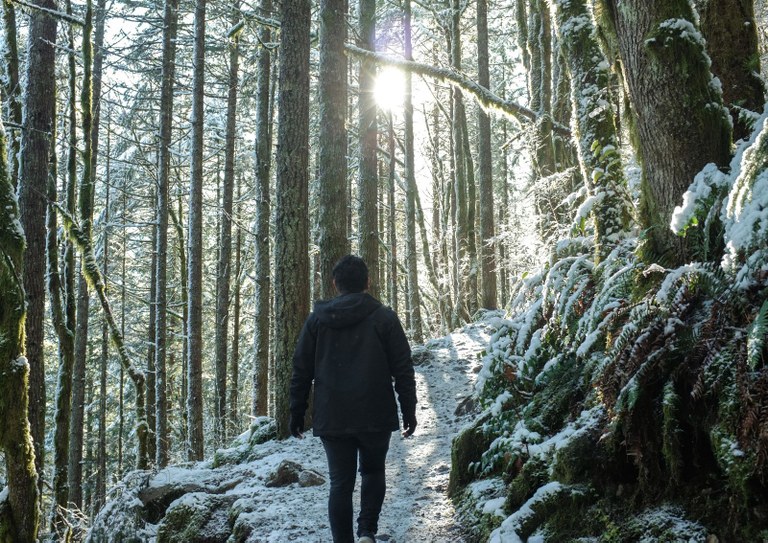 Washington Trails
Association
Washington Trails
Association
Trails for everyone, forever
Photography equipment can be fragile and expensive. Planning for a shoot during the winter months takes careful preparation. By Zyanya Alvarez
In the past, whenever I found an opportunity to go hiking, especially in colder weather, I was reluctant to bring my camera gear with me, rather than just my phone. The main reason was that I did not have a backpack that could safely hold both my camera equipment and my other hiking essentials. (Trust me, you don’t want to be mixing snacks with camera gear — that leads to disaster!)
I did some research, gathered tips from others and tried things myself until I ended up with a functional solution for the shutterbug in me.
What motivates me to bring more than just my phone camera? Having a lightweight option for what I carry. This is not easy when you have to consider the special gear required for winter scenarios. And, if there’s a lot of snow where you are going, you will also have to bring snowshoes and poles.
With all the special gear on you, there is another important thing to consider: watching your step. I usually don’t like having the camera on my front when I’m hiking on difficult trail conditions because I worry that my camera will get damaged when I have to bend or I take a false step.

Think carefully about what you pack, and you’ll have room for your camera and the gear you need to keep you safe and cozy in the winter. Photo by Zyanya Alvarez.
Having proper gear to protect you from the cold, the rain and even the snow will make it easier for you to enjoy taking pictures while you are out on an adventure. Waterproof and insulated clothing will be your best friends. Once you’ve taken care of that, it’s time to think about protecting your back and your knees. The key is to distribute the weight of your backpack in a way that can help you avoid possible injuries. You know your body and strength better than anyone else. And don’t forget to use gloves to protect your fingers when using the camera!
Before investing in a backpack or modifying your existing one, there are a lot of factors to consider, depending on your photography interests. Maybe you’re into night photography and would love to capture the stars glowing over the snowy mountains, so you need to carry a tripod with you (a carbon fiber tripod works best because it does not retain cold and is lighter). Maybe wildlife is your favorite subject to photograph and you want super crisp, high-resolution photos, so you need a telephoto lens (known for being larger and heavier than other lenses).
Considering the size of the equipment you want to carry will help you decide which features you need in your backpack. I found that two compartments, each with its own access, work perfectly. One is for my hiking essentials, and the other one is for keeping all my camera stuff safe. It’s a padded compartment, like what you find inside a camera bag.
Pro tip: Most camera bags have the option to remove the padded compartment, which you could use in your hiking backpack.

Photo by Zyanya Alvarez.
Even though nature is unpredictable, having an idea of the type of photos you expect to capture on your hike could help you prepare the settings on your camera the day before. Most digital cameras have similar options. Play with the modes your camera has to offer. Most of them adapt great depending on what the camera sensor reads. The goal is to have everything ready so you can just take the camera out of the bag, adjust the focus and shoot.
There are so many options to choose from when it comes to camera equipment, for all types of budgets. Whether you have a DSLR, a mirrorless camera, a GoPro or a film camera, I recommend always including some sort of camera stabilizer (like a tripod), extra memory cards and extra batteries (battery life is shortened in colder temperatures).
Now you are ready for a lightweight outdoor adventure. Remember that protection is key, no matter what. It will help you have a better experience and it’ll make your equipment last longer. And even though your backpack may not feel heavy, remove it once in a while when you take pictures. Your back and shoulders will thank you and you’ll have an opportunity to try different angles for your composition.